Sulcata Tortoise for Sale | Best 1 Exotic pets for sale
$120.00
Sulcata Tortoise for Sale, Best 1 Exotic pets for sale, Tortoise for sale, buy Tortoise, exotic Tortoise for sale, exotic pets for sale, tiger cubs for sale
Category: EXOTIC TORTOISES FOR SALE
Sulcata Tortoise For Sale: Care, Habitat, and How to Get One
Sulcata tortoise for sale , often called African spurred tortoises, are one of the most fascinating and popular species to keep as pets. Known for their calm nature, impressive size, and resilience, these tortoises can live for decades if properly cared for. If you’re thinking about getting a **Sulcata tortoise for sale**, this guide will walk you through everything you need to know, from basic care to how to handle a **baby Sulcata tortoise** and where to **buy a Sulcata tortoise** responsibly.
Why Choose a Sulcata Tortoise?
Sulcata tortoises are appealing for several reasons. Here’s why many reptile lovers can’t resist them:
– **Incredible Lifespan**: Sulcatas live a long time, often surpassing 70 years of age with proper care. This means owning a Sulcata is a lifelong commitment.
– **Impressive Size**: These tortoises are one of the largest species in the world. A fully grown Sulcata can weigh up to 150 pounds or more, making them a unique pet to have.
– **Friendly Nature**: Sulcatas are known for their calm and friendly demeanor. They may even recognize their owners and enjoy following them around.
– **Simple Diet**: These tortoises thrive on a relatively simple, plant-based diet, which makes feeding them easier compared to other reptiles.
However, before diving in, it’s important to understand that owning a Sulcata tortoise requires space, resources, and commitment. Let’s explore where you can find a **Sulcata tortoise for sale**, and what to expect when you bring one home.
Where to Find a Sulcata Tortoise for Sale
When looking for a **Sulcata tortoise for sale**, it’s crucial to ensure you’re purchasing from a trustworthy source. Here are the top places to consider:
Reputable Breeders
Buying from a reputable breeder is often the best option, especially if you’re looking for a healthy **baby Sulcata tortoise**. Breeders can provide you with the tortoise’s background and help guide you on proper care. Be sure to ask questions about the tortoise’s diet, health, and general upbringing to ensure you’re making an informed decision.
Online Reptile Stores
Many reptile enthusiasts turn to online stores to **buy a Sulcata tortoise**. Look for sellers with good reviews and solid reputations. Online stores should be transparent about their shipping methods, ensuring the safety of the tortoise during transportation, especially if it’s a **baby Sulcata tortoise** that needs extra care.
Local Pet Shops
Some local exotic pet shops may carry Sulcata tortoises. It’s a good idea to visit the store in person to inspect the conditions in which the tortoises are kept. A healthy tortoise should have clear eyes, a strong shell, and an alert demeanor.
Regardless of where you buy your Sulcata, be sure to do your research to ensure you’re bringing home a healthy and well-cared-for tortoise.
Caring for a Baby Sulcata Tortoise
If you decide to adopt a **baby Sulcata tortoise**, you’ll need to be extra attentive to their care and habitat. These young tortoises are delicate and need a carefully controlled environment to grow into healthy adults.
Housing for Baby Sulcatas
– **Indoor Enclosures**: Baby Sulcatas are usually kept indoors to control temperature and humidity. A large terrarium or a tortoise table will work best. The enclosure should be at least 40 gallons in size, but as your tortoise grows, you’ll need to upgrade to larger spaces.
– **Substrate**: A mixture of coconut coir and sand or a combination of mulch and soil works well for a baby tortoise. This helps retain moisture while keeping the habitat dry enough to avoid shell rot.
– **Temperature and Lighting**: For a **baby Sulcata tortoise**, a warm environment is crucial. The enclosure should have a basking area with temperatures of 95-100°F, and the cooler side should be around 80°F. Make sure to provide UVB lighting to promote proper shell and bone development.
Feeding Baby Sulcata Tortoises
Baby Sulcatas thrive on a high-fiber, low-protein diet that mimics what they’d eat in the wild. Some of the best foods to offer include:
– Grasses like Bermuda grass or Timothy hay
– Leafy greens such as collard greens, dandelion greens, and mustard greens
Avoid feeding them fruit, as it can disrupt their digestive system. Also, sprinkle a calcium supplement on their food to ensure proper growth.
Hydration and Soaking
Although Sulcatas are desert dwellers, hydration is still key, especially for babies. Always have a shallow water dish in their enclosure and soak your tortoise in lukewarm water about twice a week. This helps with hydration and encourages healthy digestion.
Caring for Adult Sulcata Tortoises
As your **baby Sulcata tortoise** matures, its needs will evolve. Adult Sulcatas are large, active tortoises that thrive in outdoor environments. Here’s how to care for them as they grow.
Outdoor Enclosures
Once your Sulcata outgrows its indoor enclosure, it will need an outdoor space to roam. These tortoises are natural diggers, so make sure your outdoor enclosure is secure with walls deep enough to prevent them from escaping. A 10×10 foot space is the minimum for an adult Sulcata, though the bigger, the better.
– **Shelter**: Provide a sturdy shelter where the tortoise can escape extreme weather. If you live in a colder climate, you may need to install a heat lamp in their shelter to maintain temperatures above 70°F during the colder months.
– **Basking Area**: Sulcatas love basking in the sun, so make sure their enclosure has a sunny area. If they don’t get enough direct sunlight, you’ll need to provide UVB lighting to help them absorb calcium and maintain healthy bones.
Diet for Adult Sulcata Tortoises
Adult Sulcatas have a similar diet to babies, but with increased quantities. Their primary food source should be grasses and hays, such as Bermuda grass and orchard grass. You can also offer leafy greens as part of their diet.
– **Calcium Supplements**: Continue to provide calcium supplements to ensure the tortoise’s shell and bones remain strong.
– **Hydration**: Adult Sulcatas still need access to water at all times, even though they come from arid regions. Offer a large shallow dish they can drink from and soak in.
Common Health Concerns for Sulcata Tortoises
Sulcata tortoises are generally hardy pets, but they can face some common health issues if their care is not properly managed.
Metabolic Bone Disease (MBD)
MBD is a common issue caused by a lack of UVB exposure or calcium deficiency. Symptoms include a soft or misshapen shell, lethargy, and difficulty moving. To prevent this, ensure your tortoise gets enough UVB lighting or natural sunlight and provide calcium-rich foods.
Respiratory Infections
If Sulcatas are exposed to cold or damp environments for extended periods, they can develop respiratory infections. Symptoms include wheezing, nasal discharge, and sluggishness. Maintaining proper temperatures and humidity levels will help avoid these issues.
Shell Rot and Parasites
If your tortoise’s enclosure is too damp, it can develop shell rot, a condition that causes the shell to soften and decay. Ensure that the substrate stays dry and clean. Additionally, internal parasites can be a problem, especially in outdoor enclosures. Regular check-ups with a reptile vet and fecal exams will help catch and treat any parasite issues early on.
Conclusion
Sulcata tortoises are amazing creatures that can bring a unique joy to any household. However, owning one requires thoughtful planning, ample space, and a long-term commitment. Whether you’re looking for a **Sulcata tortoise for sale** or considering adding a **baby Sulcata tortoise** to your home, it’s crucial to prepare for the lifelong care of these gentle giants.
If you’re ready to **buy a Sulcata tortoise**, be sure to source your new pet from a reputable seller, and always prioritize the tortoise’s well-being. With the right care and attention, your Sulcata will grow into a healthy and happy companion for years to come.
Be the first to review “Sulcata Tortoise for Sale | Best 1 Exotic pets for sale” Cancel reply
Related products
EXOTIC TORTOISES FOR SALE
$299.00
EXOTIC TORTOISES FOR SALE
$22.99

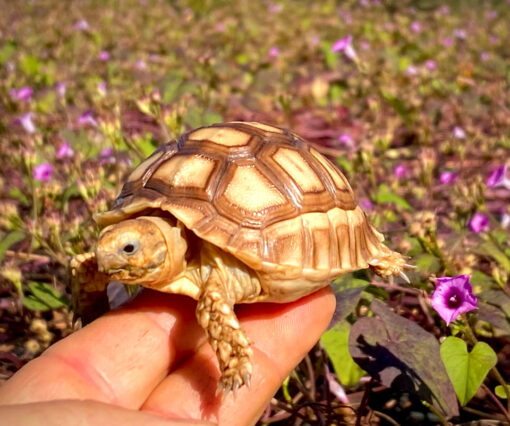

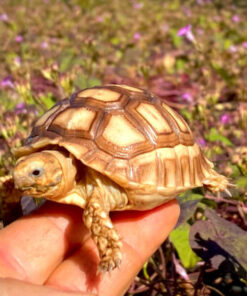
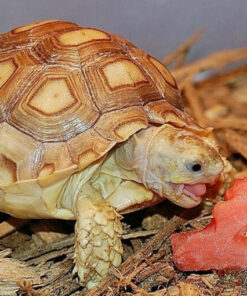
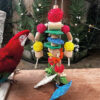

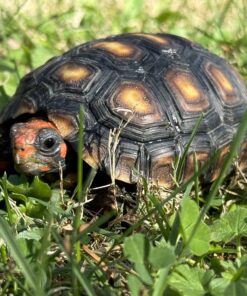


Reviews
There are no reviews yet.